Travel: Zaragoza, Pampalona, Spain 3/27-28/2023
- Lili Naveh
- Mar 29, 2023
- 10 min read
Updated: Apr 3, 2023
Continuation of the 2023 trip
Departing the Catalan region., The long 3.5 drive from Cirona to Zaragoza toward the
Aragon region, continued, mostly along a verdant hilly beautiful landscape, very pleasing
to the eye., which revealed yellow carpets of flower bloom, pine groves and farm-land..


Saragossa

This town, which is the 5th largest city in Spain.(about 680K inhabitants) and which is blessed with historical heritage, makes Zaragoza or Saragossa, an intriguing place.
Yet, is not on the mass tourist focal destination. Relatively few international visitors,
bother to frequent Thus it was a good reason for us to be attracted to it for an overnight.

Saragossa is the capital city of the Zaragoza Province, community of Aragon in the northeast of Spain, The region covers the area of the medieval Kingdom of Aragon.
is named after the Aragón river, a tributary of the Ebro. River, and has a dialect of Spain in Aragonese

It is situated by north-east of the Iberian Peninsula, in the rather arid depression formed by the valley of the Rbro, Ebro river and its tributaries, the the Huerva and the Gállego,

Zaragoza was founded in the 5th c as an Iberian settlement on the banks of the River Ebro. Since then, it has been successively been ruled by the Romans, Goths, the Moors,
Aragonese and the Catholic Monarchs, with the remnants of each still visible in the city today.
It occupies a strategic position at the center of the vast depression, once an arid dessert and now a fertile plain
watered by the 3 rivers, which meet upon it, and the nearby imperial canal now used only for irrigation.
Sugar refining and textile were the main industries once, but after the War of Independence,( 1807–1814) the city was largely rebuilt and its industrial focus got changes as well
The automotive industry is a main pillar of the regional economy along with Balay, which manufactures household appliances; CAF, which builds railway rolling stock for both the national and international markets. It has a major university religious centers
The annual Fiestas del Pilar the city's main Fest, last for nine days, with its main day on 12 October.
The city is known for its .well-preserved Roman ruins (the old Roman forum, the Teatro Romano) and the ancient city walls. for its folklore, the local cuisine, and several iconic warm brown brick agglomeration buildings, palaces and grand landmarks such as: the Basílica del Pilar, La Seo Cathedral and the Aljafería Palace.
After the re-conquest of Spain by the Christians, an unusual thing happened in Zaragoza. Muslims were allowed to stay and keep their own laws, customs and religion. The Moorish style of architectural design was given the name Mudejar and continued to flourish in the city, with many churches built in this style.
Some of these Mudejar buildings include the Cathedral of San Salvador o La Seo, the Church of San Pablo and the Monastery of Comendadoras Canonesas del Santo Sepulcr.
Zaragoza’s Old Town
It is locally known as the Casco Antiguo or the Ancient District. beautiful pedestrian old town recognized by its beautiful architecture, large rectangular square paved,winding streets, and narrow allies.


This main public square, is a large space of historical importance close to many restaurants, bars, monuments and museums, and framed by old and modern buildings. that is near many other major attractions.
The monument in he center of the aquare
Monumento a los Mártires de la Religión y de la Patria

Made of stone and bronze the, "Monument to the Martyrs of Religion and the Homeland" in its architectural design by Ricardo Magdalena and in its sculptural work by Agustín Querol ,It represent the main martyrs of the city, both alluding to the Innumerable martyrs of Zaragoza whose tradition dates back to the 4th c , and those who stood out in the defense of the city in the Sieges of Zaragoza .
It was erected in the Plaza de la Constitución, currently Plaza de España , and inaugurated on October 23, 1904.


The Square been a part of Zaragoza life for about 2,000 years, changing names, form, and function, In Zaragoza's early years, a Roman gate stood here.
It was among the last sights some of the city's first Christians saw as they passed through it on their way to being executed. During the 15th c.

Right off Plaza Espania there is a popular family restuarnt specializing in local food with good cooking and hearty portions
C. del Coso, 35,

Amain pedestrian shopping street in old city attached to the famous Plaza de las Catedrales/Pilar, with elegant houses from the 19C, and many restaurants and, ice-cream and cafes .

Plaza de las Catedrales/Pilar

A huge rectangular plaza on which the the Town Hall building, and the two humongous cathedrals of Zaragoza: are situated:

The La Seo Cathedral or the Catedral del Salvador de Zaragoza which includes the Tapestry Museum inside
The building combines the features of the styles of different centuries: Mudejar, Gothic, Renaissance, Baroque, and is included in the UNESCO list.
The Cathedral-Basilica - Pilar. - Cathedral-Basilica of Our Lady of the Pillar, -
where the homonymous Marian invocation is venerated.

This imposing, Baroque building. is reportedly the first church dedicated to the Virgin Mary. It was first conceived of in 40 CE by the Apostle James and is probably one of the most underrated destinations in Northern Spain.
The square is one of the busiest popular places in town thus known by the nickname of
"El salón de la ciudad" -the hall of the city- since many public parties are held there.
Goya

C. de Espoz y Mina, 23, only 4-min walk from the Pilar Cathedrla
The museum is devoted to the painter Francisco de Goya y Lucientes (Fuendetodos, Zaragoza, 1746 - Bordeaux, 1828) the 18C Spanish romantic painter and printmaker.

The museum opened in 1979 in the former house from 1535 of the noble Jerónimo Cósida – and is one of the most beautiful examples of Renaissance civil architecture in Zaraguza
The museum collection includes over 1,000 works, with around 500 on display.
Paseo de Independencia Mercado Central Old Center
In another part in town, about 15 minutes walk from the main square of the Cathedrals, is perhaps most significant structure - the Moorish Aljafería Palace, a testament to the independent Muslim State of Zaragoza established during the 11th and 12th c
It was built outside Zaragoza's Roman walls, in the plain of the saría.
With urban expansion over the centuries, it is now inside the city.
Moorish Aljafería Palace
Calle de los Diputados, s/n,

Aljafería Palace is a fortified Islamic palace best example of Moorish architecture outside of Andalusia, listed as a UNESCO World Heritage Site
It is more impressive from the outside then the interior that hardly survived.
From the Troubadour Tower - the oldest component of the Aljafería to the Golden Hall to the Patio de Santa Isabel, the Hispano-Moresque architecture is worth seeing the ornate Arabic arches and intricate carvings.
The Garden As a Jail
A complete transformation of the structure into barracks took place in 1772 and it also served as a jail.
Today, the building is the house of the parliament of Aragón,
Jews of Zaragoza

The Jewish presence in Zaragoza probably dates back to Roman times.
The Jewish quarter was mainly located, until the Inquisition, between the Seminary of San Carlos and the Magdalena Square, with its center on Santo Dominguito Street
within the walls built at that time, in the south-eastern part. .Six gates led to it.,no longer existing, The neighbourhood housed a synagogue, a butcher’s shop and a hospital.
Following the development of the Jewish community in the 13th c, another Juderia was built to the south of the old one, between Coso and San Miguel streets. This area is now called Barrio Nuevo. Many synagogues were built here.
By the end of the 15th c, the Jewish community made up 10% of the population in Zaragoza, and 25% of Aragon. However, after the Spanish Inquisiton, almost all Jews were systematically expelled.
Food
Los Cabezudos Restuarant
C. de Antonio Agustín, 12, 976 39 27 32
Hotel we stayed

Gran Hotel - NH Collection
C. Joaquín Costa, 5, 976 22 19 01
Dating from 1929, this historic building with an impressive domed foyer and chandelier, is set in Zaragoza's main commercial area, right by Plaza Santa Engracia and close to the the old center and 10 minutes walk from
La Seo Cathedral
The red car is our rental one
Plaza Santa Engracia

In the heart of the city, this small irregular shape square with a garden houses an
impressive church, the Bust of Joaquín Costa , the Monument in memory of the victims of Covid-19 . and the Post Office Building
The i16C Bazilica on the square - Church of Santa Engracia de Zaragoza was built on the spot where Saint Engratia and her companions were said to have been martyred in 303 AD
Post office Santa Engracia Monument to victims of Covid 19
On the overnight in Zaragoza (on 4/2) when we returned from San Sebastian on the way back to Barcelona, the historic center was swelled with locals who poured to the street to participate in 2 festivities.
The first one : the Zaragoza women Basketball match over Perfumerias Avenida Salamanca
The second :Ester week Semana Santa
The Easter week celebrations in Zaragoza which attracts more than 100,000 visitors every year., date back to the 18th c. Easter week is one of the most heartfelt and deep-rooted fiestas traditionally celebrated in Spain., commemoration and remembering the passion and death of Jesus Christ
The thundering sound of drums during the processions - solemn parades in which crowds of people follow pointed hoods face covered religious participants ( reminding me of inquisition imagery), in the company of festively dressed religious images /icons on their route around the historic town.
Merry dressed festively was set under a canopy and led in the procession after her son Jesus statue hung from the cross while accompanied by rows and rows of children and adults all uniformly dressed for the occasion, and with utmost seriousness carrying their
religious festive obligations. That was quite a scene to watch...
++++++++++++++++++
The following day on 3/29, our drive from Zaragozza continued toward Pamplona
In the beginning of the drive the landscape was still appealing and verdant
PAMPLONA
However, in contrast to the to the beautiful verdant scenery which is revealed on the way from the Catalan Costa Brava to Girona, the 3.5 hours drive from Zaragoza through the Aragonian vast arid depression of Ebro Valley , south of the Pyrenees mountains , was quite tedious and boring. all the way to Pamplona
While the Ebro river banks are largely flat, the territory flanking them displays a rugged terrain, featuring muelas and escarpments, and only occasionally patches of irrigated green fields.
Pamplona
It is the 3rd-largest city in the greater Basque cultural region. and the capital city of the Chartered Community of Navarre, Now a days it is most known for hosting one of the world’s biggest parties, the festival of San Fermín, where the exhilarating (or infamous .. what ever your politics is..) “Running of the Bulls” takes place.

Commending 2 major frontier roads to the Roncesvalles Pass and the Velate Pass and
situated on the fertile flood plain of the Arga river, (a 2nd-order tributary of the Ebro)
has mad the town since very early times the most important city of the Spanish Pyrenees
The small historic town also offers , an Old Town, streets with collection of monumental buildings dominated by its churches and medieval walls, citadel park and deep-rooted traditions

Traces of early settlement from the bronze to early age can be found, but its inception is attributed to Roman general in 75 BC, - General Pompey - thus its name. It importance grew in the 10th c with the kingdom of Pamplona. During the reign of Sancho III el Mayor ( 11th c), the current route of the Way of Saint James was established through the lands of Navarre, a fact that would influence both the city’s appearance and its historic development.
Running of the Bull
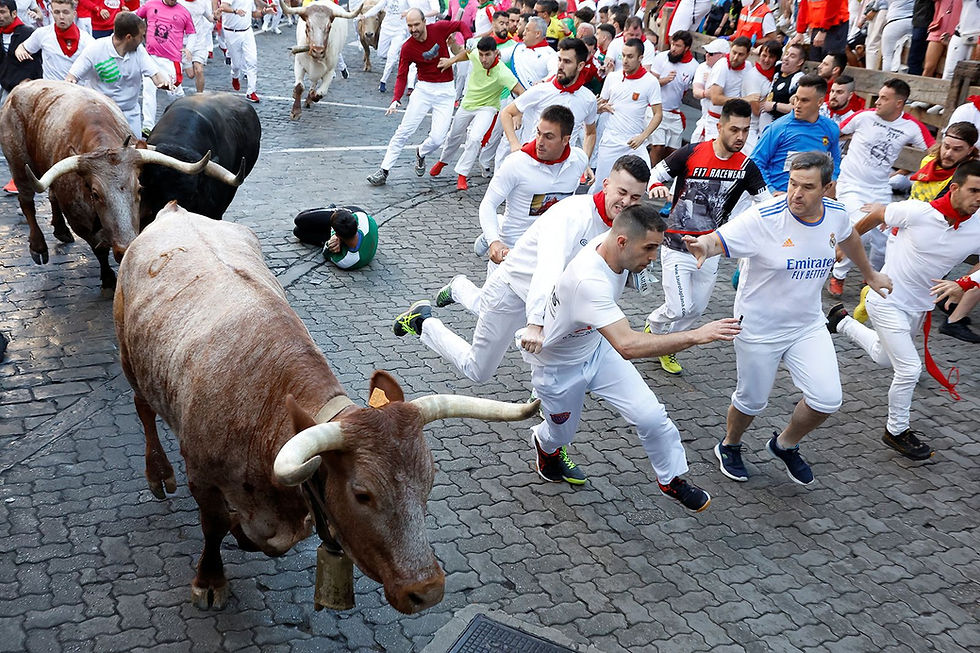
The town is famous worldwide for the running of the bulls during the San Fermín festival, which is held annually from July 6 to July 14.
This festival was brought to literary renown with the 1926 publication of Ernest Hemingway's novel The Sun Also Rises.
6 Spanish fighting bulls, along with 6 steer, run from the Corrales de Santo Domingo to Pamplona's Plaza de Toros (bullfight arena.) Over 1 million spectators watch thousands of runners over the 8 days of the San Fermín Festival.
As we were passing through Pamplona just for few hours in March, we obviously were spared this "bull running" madness, and encountered only Hemingway statue, proudly installed in this a very sleepy quite town.

Pamplona certainly owes some of its fame to its adopted son, Ernest Hemingway, who spent a considerable amount of time in Navarra during the Spanish Civil War and was a big fan of the San Fermín Festival.
Hemingway wrote about the festival and the “Running of the Bulls” (“Encierro” in Spanish) in his book,:
The statue of Hemingway is just in front of Plaza de Toros

The Plaza designed in 1922 by Francisco Urcola, who also designed Sevilla’s “Monumental” Plaza de Toros and “El Chofre” plaza in San Sebastian ,
with an initial capacity of around 13,000 seats.

The bullfight arena was financed by construction bonds issued by the (ironically..)
Casa de Misericordia de Pamplona (House of Mercy charity), the organization which continues to manage the facility and the annual bullfights.
A major renovation in 1967 increased the capacity to 19,721 spectators.
Castillo Square
A main large square at the heart of the city, vital throughout the history of Pamplona.

It was named after the castle that once stood on the eastern part of the plaza, near the Bajada de Javier, built by Luis Hutín in 1310, the current plaza being the parade ground of the former edifice.
In the late Middle Ages, the plaza was a no-man’s-land of sorts during the difficult times In addition to its military function, it operated as market place in 1324 and was also used to sow grass and wheat in the 14th century.
During the 17th , as new buildings began to be built, urban development started in the continued until the 18th century., erecting elegant buildings
The plazais also the first spot that Ernest Hemingway was greeted when he arrived with his wife Hadley Richardson on 6 July 1923. Hemingway made the plaza his hot spot in Pamplona.


San Nicolas - a name of one of the three boroughs that merged in 1423 in the city to form the modern city, as well as the name of church and a pedestrian street, leading to the main Castillo square.

San Nicolas church was built in the 12th c, not only with religious functions, but also as a defensive bastion ( evident in the watch tower.) of the quarter during the strife with the neighbouring ones of St. Saturnino and Navarrería. the original Romanesque church was destroyed by a fire, and was replaced by a new building, consecrated in 1231.
The street is a narrow ally in the old town with many cafes and restaurants.
We enjoyed lunching at this Asado meat restaurant

Asador Katuzara Restaurant
C. San Nicolás, 34
Hearty grilled meats & skewered snacks served in a stylish, informal setup with exposed-brick walls.

Plaza Consistorial - Town Hall

A central large square dotted with a Baroque façade of the Town Hall., from 1752, commemorates the union of the hamlets of San Cernín, San Nicolás and Navarrería.

Next to the town hall is the Gothic church of San Saturnino /San Cernín, built in the 13th c with Its 2 towers, one with an iconic rooster-shaped weather vane.Previously crowned with battlements, suggest its former defensive role (for more)
And that is about what we manged to experience in town, or short few hours, break before we continued our way uo north to the resort town of San Sebastien
Departing Pamplona
The scenery changed, again and became verdant and appealing, when driving further north through hilly of the Pyrenees and toward the the Mediterranean coast ,by which San Sebastian is situated.
Arriving at San Sebestian

To be Continued,,,,,

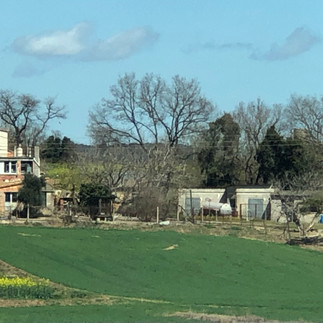
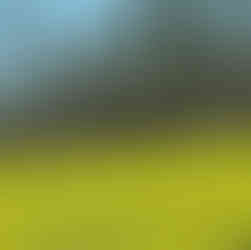






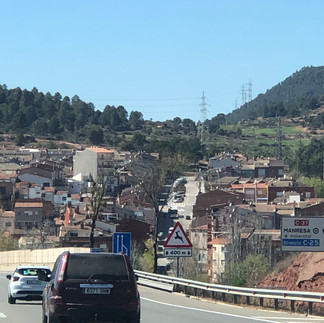





















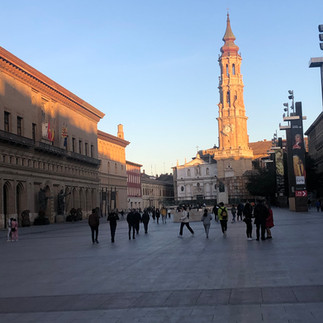


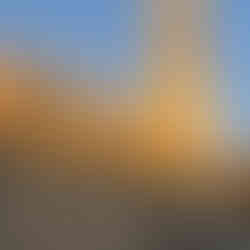


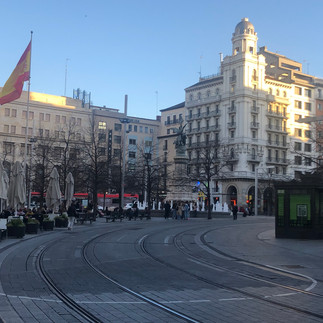
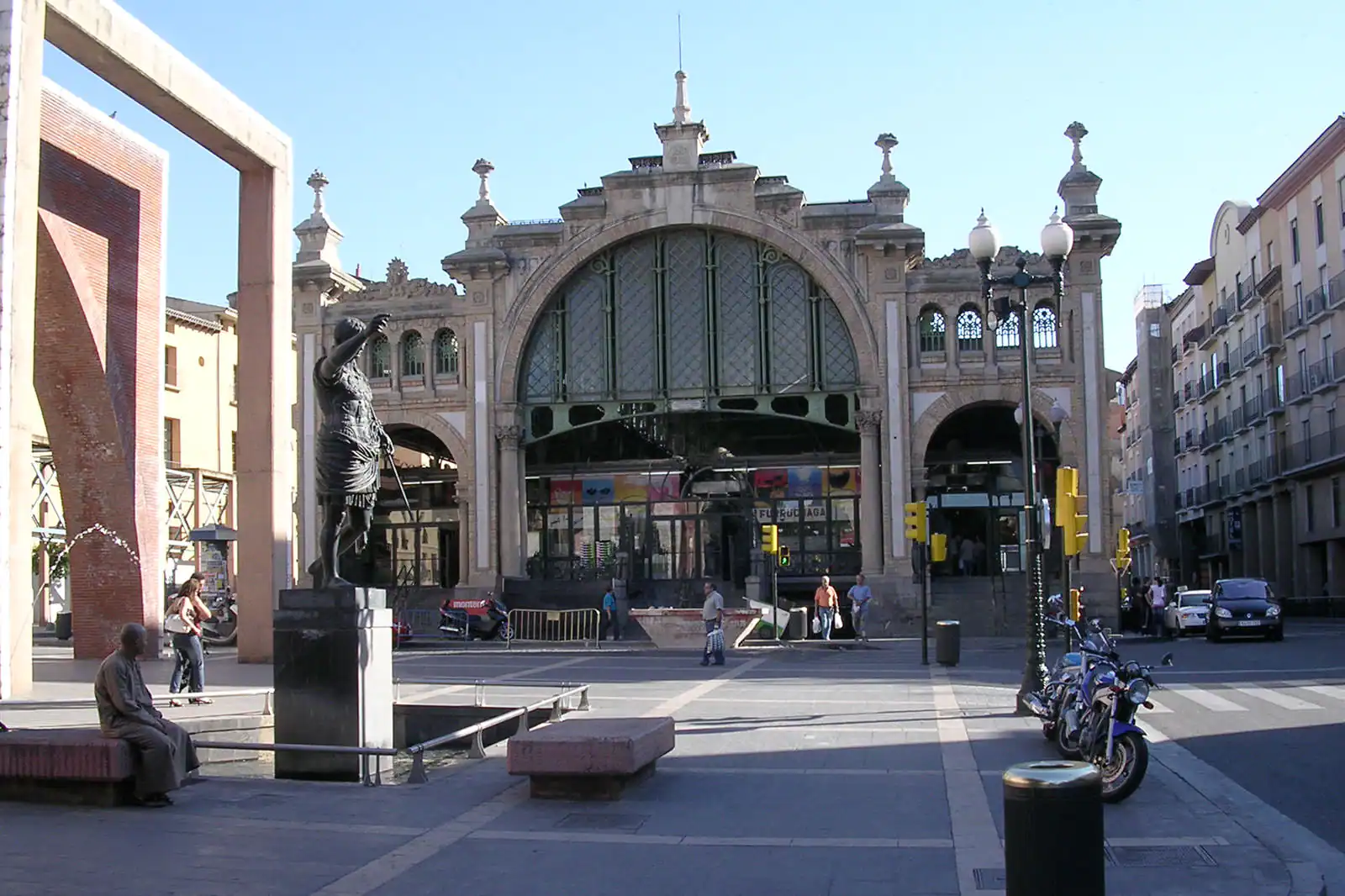





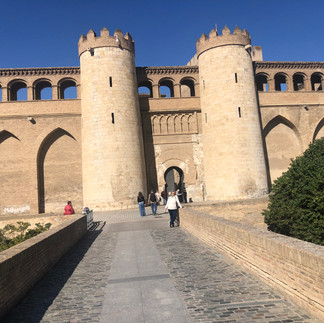









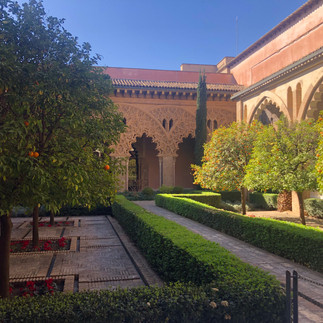















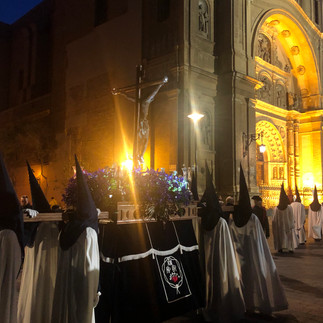

















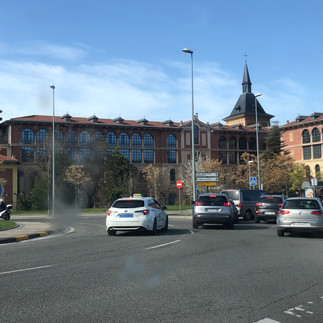





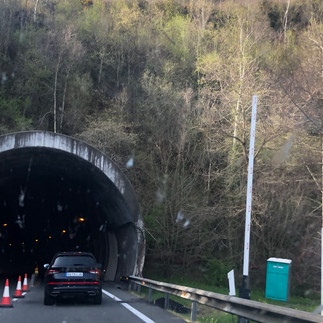

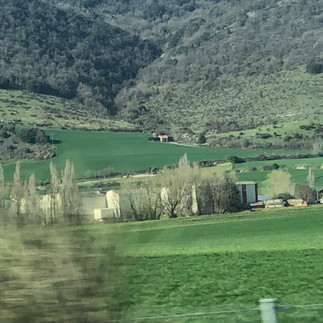

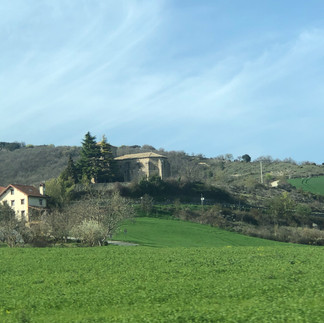


Comentários